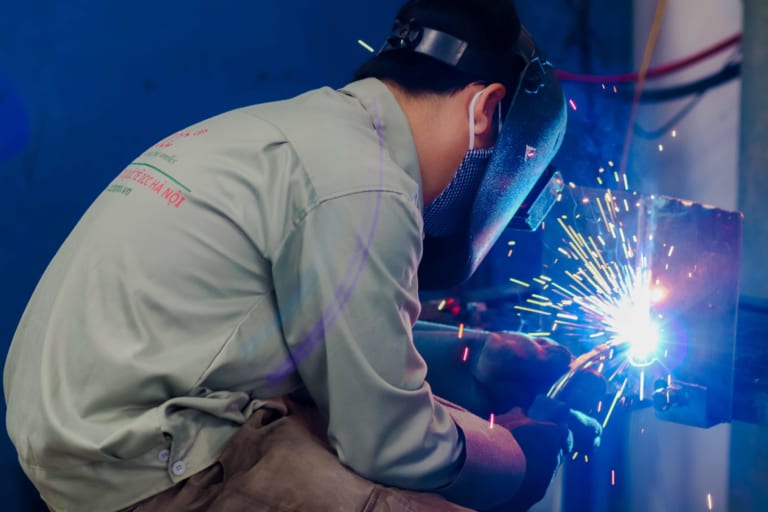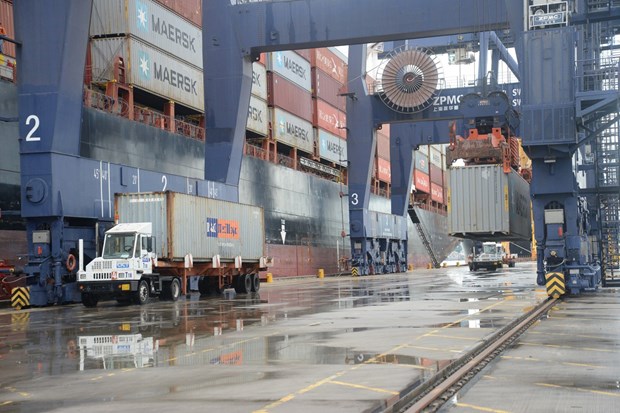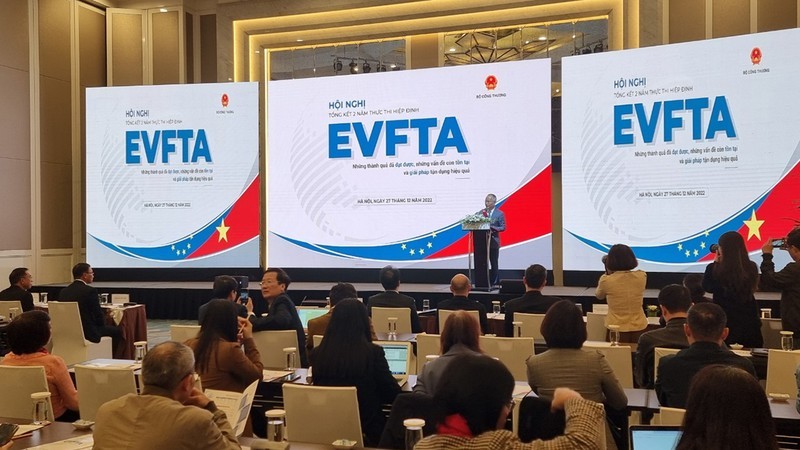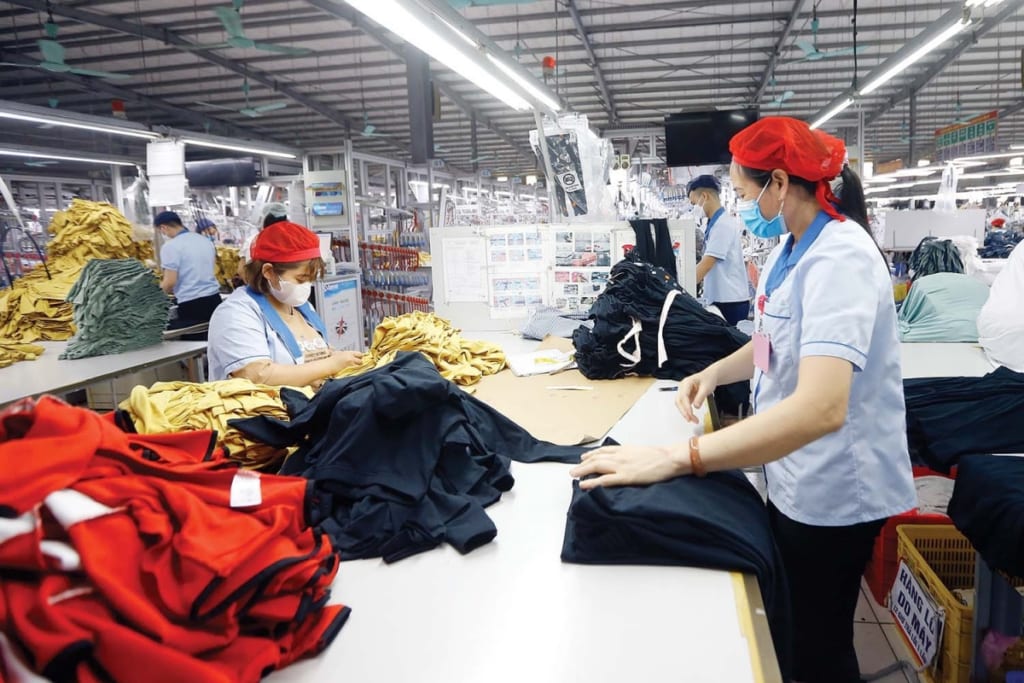Introduction
Europe’s rapid industrial expansion has created a high demand for skilled welders, essential to fields like construction, renewable energy, and automotive manufacturing. With local labour shortages, European companies are increasingly turning to Vocational Training for Welders in Vietnam as a reliable solution. Vietnam’s welding programs emphasise technical proficiency, safety, and international certifications, producing workers ready to meet rigorous standards. LabourLinkVN plays a vital role by connecting Vietnamese welders with European employers and managing compliance, orientation, and legal requirements. This article explores the training journey of Vietnamese welders, focusing on how these programs prepare them to succeed in European industries.
1. Rising Demand for Skilled Welders in Europe and the Role of Vietnam
Labour Shortages and Increasing Demand in European Industries
Europe’s reliance on skilled welders has surged due to the expansion of high-demand sectors like construction, automotive, and renewable energy. Many projects, from infrastructure builds to green energy installations, depend on experienced welders to ensure quality and safety. With an aging workforce and fewer young professionals entering the trade, Europe faces a growing skills gap in welding, prompting companies to seek skilled welders from abroad.
How Vietnamese Welders Are Addressing Europe’s Workforce Shortage
Through Vocational Training for Welders in Vietnam, welders are developing key competencies tailored to the needs of European industries. Vietnamese training programs focus on techniques that align with European standards, such as MIG, TIG, and SMAW welding, essential across construction, automotive, and energy sectors. LabourLinkVN supports this process, ensuring that welders meet European standards in safety, compliance, and proficiency while addressing the shortage of skilled labour in Europe.
2. Comprehensive Training Curriculum in Vietnamese Vocational Programs
Technical Training and Hands-On Experience
Vocational Training for Welders in Vietnam includes a balanced curriculum that combines technical education with extensive practical training. Welders undergo rigorous instruction in a variety of welding techniques that European employers require:
- MIG (Metal Inert Gas) Welding: Widely used in construction and industrial applications for its speed and strength, MIG welding is a key skill for welders in Europe’s automotive and heavy machinery sectors.
- TIG (Tungsten Inert Gas) Welding: Essential for precision work, TIG welding is often used in projects like aerospace construction, pipelines, and applications requiring clean, high-quality welds.
- SMAW (Shielded Metal Arc Welding): Valued for its adaptability and strength, SMAW welding is frequently utilized in structural and industrial applications, crucial in sectors like shipbuilding and renewable energy.
Vietnamese vocational programs also introduce students to various metals and materials, such as stainless steel, aluminium, and titanium, ensuring that they can adapt to a range of European industry demands.
Theoretical Foundations and Skills Development
Beyond practical skills, vocational training for welders in Vietnam includes strong theoretical foundations. This includes understanding metal properties, blueprint reading, and basic engineering principles. Courses in math, physics, and metallurgy help welders comprehend the science behind their trade, empowering them to troubleshoot and ensure quality across different projects. These theoretical insights prepare welders to work effectively in Europe’s technically advanced work environments.
3. Emphasizing Safety and Compliance in Vietnamese Welding Training
Core Safety Protocols and Protective Equipment Training
Safety is a top priority in Vocational Training for Welders in Vietnam, especially given the physical risks involved in welding. Vietnamese vocational programs cover:
- Proper Use of Personal Protective Equipment (PPE): Training includes the correct usage of PPE, including helmets, gloves, and flame-resistant clothing to protect against burns, sparks, and UV exposure.
- Handling Hazardous Materials and Fire Prevention: Welders are trained to handle flammable and toxic materials safely, preventing workplace accidents and minimizing risks.
- Emergency Response and Risk Awareness: Courses include fire prevention techniques and protocols for handling hazardous materials, and ensuring welders are prepared for emergencies.
With this strong emphasis on safety, Vietnamese welders are equipped to meet the strict safety regulations that European industries enforce.
Quality Control and Inspection Techniques
Quality assurance is integral to Vocational Training for Welders in Vietnam, as European industries demand high standards for structural integrity and durability. Vietnamese training includes:
- Non-Destructive Testing (NDT): Techniques such as ultrasonic and X-ray testing are taught to inspect welds without compromising material integrity. This method is critical in high-stakes projects like bridges, pipelines, and automotive manufacturing.
- Strength and Stress Testing: Vietnamese welders learn to perform weld strength tests, ensuring they meet the durability standards required by European infrastructure and industrial projects.
- Dimensional and Visual Inspection: Training in visual and dimensional inspections helps welders verify that each weld meets the precise specifications outlined in project blueprints.
These quality control skills are essential for European projects where quality, reliability, and compliance with strict codes are non-negotiable.
4. LabourLinkVN’s Role in Connecting Vietnamese Welders to European Jobs
Screening, Selection, and Job Placement
LabourLinkVN works closely with vocational schools to identify skilled graduates who match European job specifications. Through a comprehensive screening process, LabourLinkVN verifies each candidate’s credentials, background, and skillset, ensuring they meet the demands of European employers. This selective process helps European companies find skilled, compliant workers who can immediately contribute to their projects.
Enhanced Training for European Standards Compliance
LabourLinkVN offers additional preparation beyond core vocational training to ensure that welders are fully equipped for European roles. This includes:
- Compliance with European Labor Standards: LabourLinkVN provides specialized training in European labour regulations, workplace safety standards, and work-hour compliance, ensuring that each welder understands local policies.
- Cultural Orientation and Language Skills: Orientation programs help welders adapt to European workplace cultures and improve communication with team members. This training fosters a positive work environment, promoting teamwork and integration.
By offering cultural and legal training, LabourLinkVN helps Vietnamese welders adapt quickly to European workplaces, ensuring they can work efficiently and productively from the start.
Streamlining Documentation and Legal Compliance
LabourLinkVN manages all necessary documentation for Vietnamese welders, including work permits, health certifications, and compliance documentation. By handling these legal requirements, LabourLinkVN reduces administrative burdens on European employers and ensures that welders meet all local laws and regulations before they arrive on-site.
5. Success Stories: Vietnamese Welders in European Projects
Case Study 1: Vietnamese Welders in Poland’s Infrastructure Expansion
LabourLinkVN placed Vietnamese welders trained in MIG and SMAW techniques on a bridge construction project in Warsaw. Their precision, adherence to safety standards, and strong work ethic contributed to the project’s timely completion. The project manager noted the workers’ adaptability, highlighting the value of vocational training for welders in Vietnam in preparing them for European work environments.
Case Study 2: Supporting Renewable Energy Development in Germany
Germany’s renewable energy industry, particularly in wind turbine and solar panel manufacturing, depends on durable, high-quality welding. LabourLinkVN placed Vietnamese TIG-certified welders with a renewable energy firm, where their skills ensured the structural integrity of wind turbines and solar panel frames. This successful placement underscores how Vietnamese vocational training aligns with Europe’s sustainability goals, supporting projects essential to Europe’s green infrastructure.
These examples highlight the role of Vietnamese welders in Europe, showcasing the practical impact of their vocational training on high-value, complex projects.
6. Benefits for European Companies Hiring Vietnamese Welders
Reduced Training Costs and Shortened Onboarding
Vietnamese welders arrive with internationally recognized certifications and practical experience, minimizing the need for additional training. LabourLinkVN’s support also facilitates smooth onboarding, allowing European companies to maintain productivity without delay.
Increased Workforce Stability and Reliable Labor Support
With their technical expertise and strong work ethic, Vietnamese welders contribute to a stable, dependable workforce for European companies. Their presence ensures that projects remain on track, addressing the ongoing labour shortages that many European industries face.
Contribution to Europe’s Sustainability Goals
Vietnamese welders, trained in sustainable practices, bring valuable skills to Europe’s green initiatives. Their eco-conscious techniques, such as efficient material use and waste minimization, align with Europe’s environmental goals, making them valuable contributors to green infrastructure and renewable energy projects.
7. Evolving Training Programs to Meet Future Industry Needs
Incorporating Advanced Welding Technologies
As automation and technology advance, vocational programs in Vietnam are incorporating training in robotic and laser welding. These skills are increasingly in demand in sectors like automotive manufacturing and high-precision industries, positioning Vietnamese welders as highly adaptable candidates for Europe’s evolving labour needs.
Building Partnerships with European Companies and Institutions
Vietnamese vocational schools are forming partnerships with European training institutions to ensure curricula meet the latest industry requirements. LabourLinkVN facilitates these partnerships, helping Vietnamese training programs align with Europe’s evolving standards. This collaboration fosters skill exchanges that ensure Vietnamese welders remain competitive in Europe’s labour market.
Integrating Sustainable Practices in Welding Training
As sustainability becomes a priority across industries, vocational programs in Vietnam are integrating eco-friendly welding practices into their curriculum. By teaching techniques that minimize energy use and material waste, Vietnamese welders are well-prepared to contribute to Europe’s sustainable construction and manufacturing goals.
Conclusion: Vietnamese Vocational Training for Europe’s Skilled Labor Needs
Vocational Training for Welders in Vietnam is a crucial resource for meeting Europe’s growing labour demands, providing well-trained welders with skills in MIG, TIG, and SMAW welding. Through strong technical education, rigorous safety protocols, and international certifications, Vietnamese vocational programs produce graduates ready for the high standards of European industries. LabourLinkVN connects these skilled welders with European employers, facilitating legal compliance, cultural adaptation, and seamless integration into international workplaces. As Europe’s labour needs evolve, Vietnamese vocational training and LabourLinkVN’s placement services are poised to continue supporting Europe’s infrastructure and green development goals.
Contact LabourLinkVN to learn more about how Vietnamese welders can meet your skilled labour needs, offering technical expertise and adherence to international standards that ensure quality and safety on every project.




